Milk thistle is not only good for the liver.
in liver disease2. Improves the occurrence and progression of mucosal inflammation
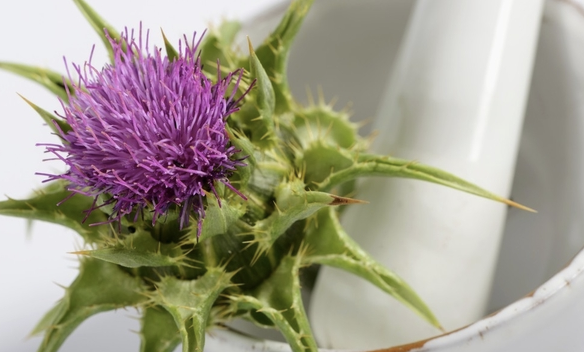
Hello. I'm a pharmacist Jinny.
Are there any ingredients that you can quickly feel when you take them? While personal experience is not very relevant when it comes to assessing the benefits of an ingredient, there are ingredients that most people quickly return good feedback to when recommended. Magnesium and milk thistle extracts.
Magnesium is an essential nutrient, and if the intake is insufficient, physical symptoms such as muscle cramps and nervousness may occur, and it is only natural that magnesium deficiency symptoms will be improved if magnesium is supplemented in sufficient amounts. However, it is a rather unique phenomenon that the body changes caused by the consumption of milk thistle extract, which is a functional ingredient, are quickly felt.
However, given the history of milk thistle's medicinal use, it may not be so strange. Milk thistle has been used in Europe since the 1st century as a remedy for jaundice, stone removal, and snakebites. Against this backdrop, in 1968, German scientists extracted silymarin, the active ingredient of milk thistle, and patented it as a treatment for liver diseases [1].
Even today, milk thistle extract is widely used as an adjunct treatment for liver diseases, and the Ministry of Food and Drug Safety has recognized its ability to support liver health. In addition, there are many other benefits reported in the scientific community today other than liver health. Today, we're going to take a look at some of the scientific research on the hidden all-rounder milk thistle extract.
As mentioned earlier, milk thistle extract is used today as an adjunct treatment for various liver diseases. Silymarin, the active ingredient in Milk Thistle Extract, is an antioxidant · It is a flavonoid compound with anti-inflammatory activity, and is known to improve the antioxidant capacity of liver tissue by increasing glutathione production in the liver, and contribute to detoxification by inhibiting the production of inflammatory substances.
The liver-protective benefits of milk thistle extract have been studied for a long time in academia. In 2020, Gillessen and Schmidt conducted a comprehensive review of the studies on milk thistle extract reported to the scientific community to date, and found that it was found that cirrhosis · Alcoholic fatty liver · We have confirmed the hepatoprotective effect of milk thistle extract on non-alcoholic fatty liver and drug-induced liver damage, and we conclude as follows [2].
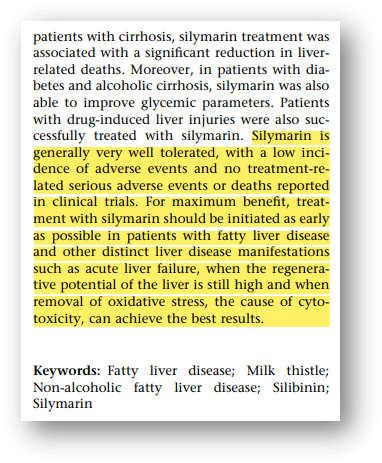
"Silymarin (milk thistle extract) is generally very well tolerated, has a low incidence of adverse events, and no serious treatment-related adverse events or clinical deaths have been reported. In patients with clear signs of liver disease, treatment containing silymarin should be implemented as soon as possible to achieve maximum benefit."
As mentioned in the study just above, milk thistle extract has antioxidant · It has anti-inflammatory activity and is well tolerated, so it has few side effects and has activity that protects the liver rather than burdening the liver when ingested. In other words, it can be considered a highly safe ingredient even when it is additionally administered to patients with certain diseases.
Based on these properties, the scientific community is investigating the possibility of using milk thistle extract to alleviate the side effects of medical treatments. In particular, attention has been focused on whether it can help with canker sores, which are the most common side effects of radiation and chemotherapy treatments. Canker sores, which occur as a side effect of radiation therapy, are known to lead to pain, loss of appetite, and weight loss, reducing the survival rate of cancer patients.
To evaluate the usefulness of milk thistle extract, Elyasi and the researchers (2016) conducted a six-week clinical trial on 27 patients with head and neck cancer, starting with the first day of radiotherapy. This study reported a delay in the occurrence and progression of mucositis following the intake of milk thistle extract during radiotherapy [3].
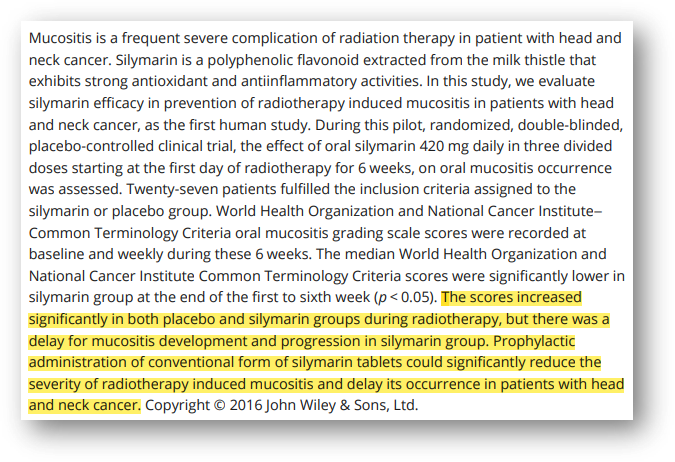
"During the radiotherapy period, scores increased significantly in both the control and milk thistle groups, but there was a delay in the occurrence and progression of mucositis in the milk thistle group. Prophylactic intake of traditional forms of milk thistle extract tablets may reduce the severity of radiotherapy-induced mucositis and delay its onset in patients with head and neck cancer."
It is now common knowledge that oxidative stress and inflammation underlie most diseases. But did you know that this "majority of illnesses" also includes some mental illnesses? In the 2000s, scientists began to investigate the hypothesis that oxidative stress in the brain caused neuroinflammation · Mitochondrial dysfunction · Inhibition of neurogenesis · It is hypothesized that it causes neurotransmission disorders and causes abnormal neurotransmission.
In particular, a high correlation between OCD and antioxidant enzyme deficiency has been reported. Obsessive-compulsive disorder is a disorder in which a person becomes anxious when a thought or scene comes to mind regardless of their will, and repeats certain behaviors to get rid of the anxiety. For example, you lock your front door, turn around, and then you realize you didn't lock the door properly, so you go back and check it dozens of times.
Selective serotonin reuptake inhibitors (SSRIs) are commonly used in the treatment of OCD, and an 8-week clinical trial by Sayyah and the researchers (2010) comparing the effects of milk thistle extract and antidepressants (fluoxetine) in 35 patients with OCD showed similar effects of milk thistle extract to antidepressants in the treatment of OCD [4].
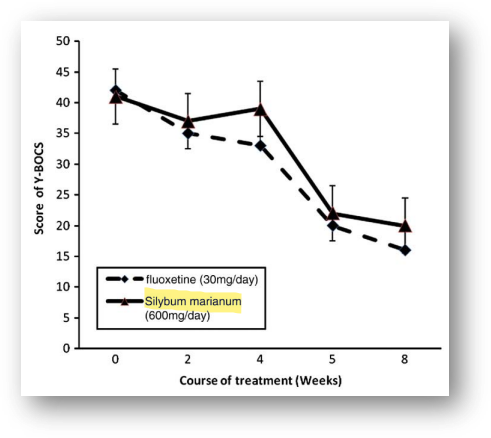
"This study shows that milk thistle extract has a positive effect on the improvement of obsessive thoughts and compulsive behaviors. The positive effect was visible from the fifth week of intake, and no side effects were observed."
Today, we've taken a look at some of the results of scientific research on milk thistle extract, which is widely loved as a functional ingredient for liver health. Most studies have shown that milk thistle extract is an antioxidant · As it is designed based on its anti-inflammatory activity, I think it would be more helpful to recognize milk thistle extract as a type of antioxidant when using it in your daily life.
In addition, most of the clinical studies I have looked at, including the clinical trials introduced today, set the daily intake of milk thistle extract at 420~600 mg as silymarin. This is more than four times the daily intake of milk thistle extract (130 mg) set by the Ministry of Food and Drug Safety. There have been no notable side effects reported, so it can be said that it is basically a safe ingredient to consume.
I hope you have a healthy day in body and mind. It was Jinny.
[1,2] Gillessen, A., & Schmidt, H. H. J. (2020). Silymarin as supportive treatment in liver diseases: A narrative review. Advances in therapy, 37(4), 1279-1301.
[3] Elyasi, S., Hosseini, S., Niazi Moghadam, M. R., Aledavood, S. A., & Karimi, G. (2016). Effect of oral silymarin administration on prevention of radiotherapy induced mucositis: A randomized, double‐blinded, placebo‐controlled clinical trial. Phytotherapy Research, 30(11), 1879-1885.
[4] Sayyah, M., Boostani, H., Pakseresht, S., & Malayeri, A. (2010). Comparison of Silybum marianum (L.) Gaertn. with fluoxetine in the treatment of Obsessive− Compulsive Disorder. Progress in Neuro-Psychopharmacology and Biological Psychiatry, 34(2), 362-365.




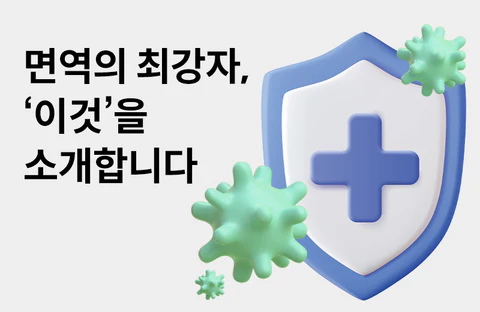
Comments (0)
There are no comments for this article. Be the first one to leave a message!